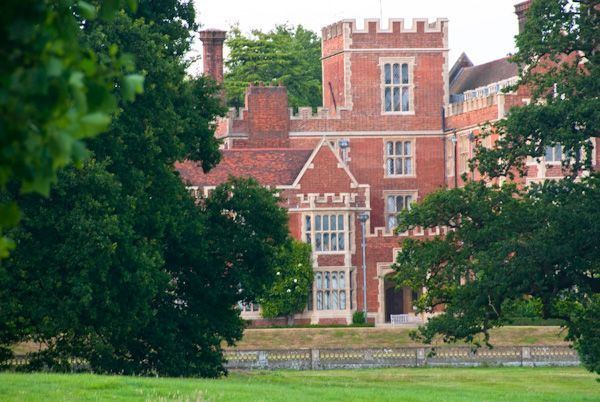Population 2,374 (2011 Census) Civil parish Benenden Dialling code 01580 | OS grid reference TQ807329 Sovereign state United Kingdom Local time Thursday 10:37 PM | |
 | ||
Weather 5°C, Wind S at 8 km/h, 91% Humidity District Borough of Tunbridge Wells | ||
The history of benenden health and the fight against tb
Benenden is a village and civil parish in the Tunbridge Wells District of Kent, England. The parish is located on the Weald six miles (10 km) to the west of Tenterden. In addition to the main village, Iden Green, East End, Dingleden and Standen Street settlements are included in the parish.
Contents
- The history of benenden health and the fight against tb
- Map of Benenden UK
- Origin of name
- History
- Benenden School
- References
Map of Benenden, UK
The parish church is dedicated to St George, and is a 19th-century building on the site of a medieval building destroyed in a fire. Benenden School, a private girls boarding school is located to the north of the village.
Origin of name
The place name of Benenden (pronounced Ben-in-dn) derives from Old English meaning Bynna's wooded pasture. Bynning denn became Benindene (1086) Binnigdaenne, Bennedene (c1100) Bynindenne (1253) then the current spelling from 1610.
History
A more detailed history can be found in the pdf file as part of a Conservation Appraisal carried out by Tunbridge Wells District in April 2005The Wealden iron industry probably existed in the area from before the Roman period, but evidence of two Roman roads built to take the cast iron from the Weald have been discovered, as well as other finds from the period. The evidence of one road, that between Maidstone and Hastings at Iden Green, is in the form of a paved ford.
The Domesday Book surveyors remarked that Benindene was one of only four places in the Weald to have a church; although like most of the other such, the buildings of the settlement were scattered. From the 14th century places such as Benenden became of industrial importance. The Wealden ironmasters continued what the Romans had done; and the other major industry, cloth-making, also helped to make the village prosperous. By the late 18th century, however, both industries had moved to the industrial north, and Benenden's prosperity was at an end. Benenden had four mills at various times. Wandle Mill, a watermill on the River Rother; East End Mill, a post mill at the site later occupied by the chest hospital, demolished c.1870; and a pair of mills to the east of the village, one of which, Beacon Mill is still standing.
In 1860 Gathorne Hardy, later to become the 1st Earl of Cranbrook (1814–1906), a prominent politician, rebuilt Hemsted, one of the Tudor buildings; in 1912 Lord Rothermere made further alterations. It now houses Benenden School
In 1907 a consortium of trade unions and friendly societies established a chest hospital in Goddard's Green Road, Benenden for the treatment of tuberculosis. Today the hospital is an independent organisation, for most medical and surgical specialities and mainly treats members of The Benenden Healthcare Society as well as some NHS and private patients.
Collingwood Ingram and James Collingwood Tinling are buried in the graveyard.
Creag may well have been played in Benenden from medieval times, however cricket has been played on the Green since the 18th century, although the first known mention of an organised club was not until 1798. To the present day with the club still playing on the traditional village green in front of the St. George's parish church and between the Bull Inn and King William IV public houses. A perfect setting for village cricket.
Benenden School
A well known private school, Benenden School is located to the north of the main village. The school's alumni include Princess Anne, Lettice Curtis, Sue Ryder and Rachel Weisz.
